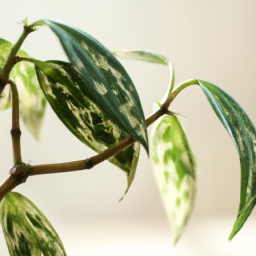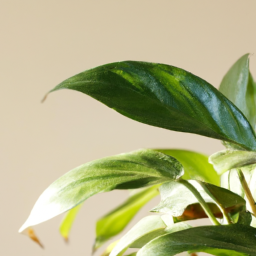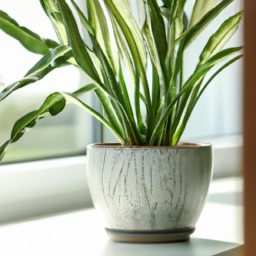
Are you looking to add some greenery to your indoor space? There are so many different types of indoor plants to choose from, each with their own unique characteristics and care requirements. Whether you’re a seasoned plant parent or just starting out, it’s important to know the different options available to find the perfect plant for your home. In this blog post, we’ll explore a variety of indoor plants, from low-maintenance succulents to air-purifying ferns, to help you bring a touch of nature indoors. So, let’s dive in and discover the wonderful world of different types of indoor plants!
Benefits of Having Different Types of Indoor Plants
Welcome to the world of indoor plants! Adding greenery to your living space not only enhances the aesthetic appeal but also offers a plethora of benefits for your health and well-being. In this article, we will explore the various advantages of having different types of indoor plants in your home.
Improved Air Quality
Indoor plants act as natural air purifiers by absorbing harmful toxins and releasing oxygen during photosynthesis. They can help remove pollutants such as formaldehyde, benzene, and trichloroethylene from the air, creating a healthier indoor environment for you and your family. Some of the best air-purifying plants include spider plants, peace lilies, and snake plants.
In addition to filtering out toxins, indoor plants also increase humidity levels in the air, which can be beneficial for respiratory health. This is especially beneficial during the dry winter months when indoor heating systems can cause the air to become too dry.
By incorporating a variety of indoor plants into your living space, you can create a natural and effective way to improve the air quality and promote better respiratory health for you and your loved ones.
Stress Reduction
Studies have shown that being around plants can help reduce stress and anxiety levels. The presence of indoor plants can create a calming and relaxing atmosphere, making your home a more peaceful retreat from the hustle and bustle of daily life. Plants have a soothing effect on the mind and body, helping to lower blood pressure and promote a sense of well-being.
Certain plants, such as lavender and jasmine, have natural aromatherapy properties that can further enhance the stress-relieving benefits of indoor plants. Simply taking a few moments to care for your plants, such as watering them or pruning their leaves, can provide a therapeutic and meditative experience that helps to alleviate stress and improve your overall mood.
By incorporating different types of indoor plants into your living space, you can create a tranquil environment that promotes relaxation and mental clarity, allowing you to unwind and recharge after a long day.
Enhanced Productivity
Believe it or not, indoor plants can also boost your productivity and creativity. Studies have shown that having plants in the workplace can improve concentration, memory retention, and cognitive function. The presence of greenery can help reduce mental fatigue and increase focus, making you more efficient and productive in your daily tasks.
Plants have a visually stimulating effect that can inspire creativity and innovation. Whether you work from home or in an office setting, having indoor plants around you can help create a more dynamic and engaging work environment. Plants such as aloe vera, pothos, and philodendron are known for their ability to enhance productivity and creativity.
By incorporating a variety of indoor plants into your workspace, you can create a conducive environment that stimulates your mind and encourages you to perform at your best. So, why not bring some greenery into your home or office and reap the benefits of enhanced productivity and creativity?

Popular Varieties of Indoor Plants for Beginners
1. Succulents
Succulents are a great choice for beginners looking to add some greenery to their indoor space. These plants are known for their ability to store water in their leaves, making them low-maintenance and perfect for those who may not have a green thumb. Some popular varieties of succulents include aloe vera, jade plant, and echeveria.
When caring for succulents, it’s important to remember that they thrive in bright, indirect light and well-draining soil. Overwatering is one of the most common mistakes people make with succulents, so be sure to let the soil dry out completely between waterings. Additionally, succulents do well in temperatures between 60-80 degrees Fahrenheit.
One of the best things about succulents is their versatility. They come in a wide range of shapes, sizes, and colors, making it easy to find the perfect plant to fit your style and space. Whether you prefer a small, compact plant for your desk or a larger statement piece for your living room, there’s a succulent out there for you.
In addition to being beautiful and easy to care for, succulents also have air-purifying qualities, making them a great choice for improving indoor air quality. So, if you’re looking for a low-maintenance plant that will brighten up your space and provide some health benefits, consider adding a succulent to your indoor plant collection.
2. Snake Plant
The snake plant, also known as mother-in-law’s tongue, is another popular choice for beginners. This hardy plant is virtually indestructible, making it perfect for those who may forget to water their plants regularly. Snake plants are known for their long, sword-shaped leaves that come in a variety of shades, from dark green to variegated yellow and green.
When caring for a snake plant, it’s important to remember that they prefer bright, indirect light but can also tolerate low light conditions. They are also drought-tolerant, so be sure to let the soil dry out completely between waterings. Snake plants do well in temperatures between 60-80 degrees Fahrenheit and are relatively pest-resistant.
One of the benefits of having a snake plant in your home is its air-purifying qualities. It is known to remove toxins such as formaldehyde, benzene, and xylene from the air, making it a great choice for improving indoor air quality. In addition to its health benefits, the snake plant is a stylish addition to any space, adding a touch of greenery and texture to your home decor.
Whether you’re looking for a low-maintenance plant for your bedroom, office, or living room, the snake plant is a great option. With its striking foliage and easy care requirements, it’s no wonder why this plant is a favorite among beginners and experienced plant parents alike.
3. Pothos
Pothos, also known as devil’s ivy, is a popular choice for beginners looking to add some greenery to their indoor space. This versatile plant is known for its heart-shaped leaves that come in a variety of shades, from dark green to variegated green and white. Pothos is easy to care for and can thrive in a variety of conditions, making it perfect for those who may not have a lot of experience with indoor plants.
When caring for a pothos plant, it’s important to remember that they prefer bright, indirect light but can also tolerate low light conditions. They are also drought-tolerant, so be sure to let the soil dry out completely between waterings. Pothos plants do well in temperatures between 60-80 degrees Fahrenheit and are relatively pest-resistant.
One of the best things about pothos plants is their ability to trail or climb, making them perfect for hanging baskets or training on a trellis. They are also great for purifying the air, removing toxins such as formaldehyde, benzene, and xylene from the air. With their low-maintenance care requirements and attractive foliage, pothos plants are a great choice for beginners looking to add some greenery to their indoor space.
Whether you’re looking for a plant to hang in your kitchen, place on your desk, or trail down a bookshelf, pothos is a versatile and stylish option. With their beautiful foliage and air-purifying qualities, pothos plants are sure to brighten up any room in your home.

Tips for Caring for Different Types of Indoor Plants
Understanding Your Indoor Plants
Indoor plants come in a wide variety of shapes, sizes, and species, each with its own unique care requirements. Before bringing a new plant into your home, it’s important to do some research to understand the specific needs of that plant. Some plants thrive in bright, direct sunlight, while others prefer low light conditions. Some plants need to be watered frequently, while others prefer to dry out between waterings. By taking the time to learn about your indoor plants, you can provide them with the best possible care.
When selecting indoor plants for your home, consider the environmental conditions of the space where the plant will be placed. Think about the amount of natural light that the area receives, as well as the temperature and humidity levels. Different plants have different preferences when it comes to these factors, so it’s important to choose plants that will thrive in your home environment. Additionally, consider the size of the plant and how much space it will need to grow. Some plants are better suited for small spaces, while others require more room to spread out.
Once you have chosen your indoor plants, it’s important to establish a regular care routine. This includes watering, fertilizing, pruning, and repotting as needed. Be sure to follow the specific care instructions for each plant, as overwatering or underwatering can be detrimental to their health. Regularly inspect your plants for signs of pests or disease, and take action immediately if you notice any issues. By staying on top of your plant care routine, you can help your indoor plants thrive and grow.
Watering Your Indoor Plants
One of the most important aspects of caring for indoor plants is proper watering. Different types of indoor plants have different watering needs, so it’s important to understand the specific requirements of each plant. Some plants, such as succulents and cacti, prefer to dry out between waterings, while others, like ferns and tropical plants, need to be kept consistently moist. Overwatering can lead to root rot, while underwatering can cause the plant to wilt and die.
To determine when to water your indoor plants, check the soil moisture level regularly. Stick your finger into the soil about an inch deep – if it feels dry, it’s time to water. Be sure to water your plants thoroughly, allowing water to soak through the roots and drain out of the bottom of the pot. Avoid letting your plants sit in standing water, as this can lead to root rot. If you’re unsure about how much to water your plants, err on the side of underwatering rather than overwatering.
In addition to regular watering, it’s important to provide your indoor plants with proper drainage. Make sure that your pots have drainage holes in the bottom to allow excess water to escape. If your pots don’t have drainage holes, consider repotting your plants into containers that do. This will help prevent water from pooling at the bottom of the pot and causing root rot. Remember, it’s always better to underwater your plants than to overwater them.
Light and Temperature Requirements
Another important factor to consider when caring for indoor plants is their light and temperature requirements. Different plants have different preferences when it comes to light exposure, so it’s important to place your plants in the right location. Some plants, such as succulents and cacti, thrive in bright, direct sunlight, while others, like ferns and peace lilies, prefer low light conditions. Be sure to research the specific light requirements of each plant and place them accordingly.
In addition to light exposure, indoor plants also have specific temperature requirements. Most indoor plants prefer temperatures between 65-75 degrees Fahrenheit during the day and slightly cooler temperatures at night. Avoid placing your plants near drafty windows or heating vents, as extreme temperature fluctuations can stress the plants. If your home gets too hot or too cold, consider using a humidifier or a fan to regulate the temperature and humidity levels for your plants.
By understanding the specific light and temperature requirements of your indoor plants, you can create an environment where they can thrive and grow. Be sure to monitor the conditions in your home regularly and make adjustments as needed to ensure that your plants are happy and healthy. With proper care and attention, your indoor plants will bring beauty and life to your home for years to come.
Let’s wrap up what we learned
Indoor plants are a great way to bring a touch of nature into your home and improve air quality. There are many different types of indoor plants to choose from, each with their own unique characteristics and care requirements. Some popular options include succulents, which are known for their ability to store water in their leaves and require minimal maintenance. They come in a variety of shapes and sizes, making them a versatile choice for any space.
Another popular type of indoor plant is the spider plant, which is known for its long, arching leaves and ability to thrive in low-light conditions. Spider plants are also easy to care for and can help purify the air in your home. If you’re looking for a plant that adds a pop of color to your space, consider a flowering plant like the peace lily or orchid. These plants not only look beautiful but also have air-purifying properties that can improve the overall atmosphere of your home. No matter what type of indoor plant you choose, be sure to research its care requirements to ensure it thrives in your home.
Frequently Asked Questions (FAQ):
Q1. What are some popular types of indoor plants?
A1. Some popular types of indoor plants include pothos, spider plants, snake plants, peace lilies, and ZZ plants. These plants are known for their ability to thrive indoors with minimal care.
Q2. What are some low-maintenance indoor plants for beginners?
A2. For beginners, some low-maintenance indoor plants to consider are succulents, cacti, and spider plants. These plants require minimal watering and can tolerate a variety of light conditions.
Q3. What are some indoor plants that can help improve air quality?
A3. Indoor plants such as peace lilies, snake plants, and spider plants are known for their ability to improve air quality by filtering out toxins and producing oxygen. These plants are great choices for improving indoor air quality.
Q4. What are some flowering indoor plants?
A4. Some flowering indoor plants to consider are orchids, African violets, and peace lilies. These plants can add a pop of color to your indoor space and brighten up any room.
Q5. How can I choose the right indoor plants for my space?
A5. When choosing indoor plants, consider factors such as the amount of light available in your space, your level of experience with plant care, and the size of the plants you prefer. Researching specific plant care requirements can also help you choose the right indoor plants for your space.
Dr. Olivia Green is a botanist with over two decades of experience in indoor plant cultivation. She holds a Ph.D. in Plant Biology and has dedicated her career to researching plant behavior in controlled environments. Dr. Green is passionate about helping plant enthusiasts master the art of indoor gardening through her extensive knowledge and practical insights.


